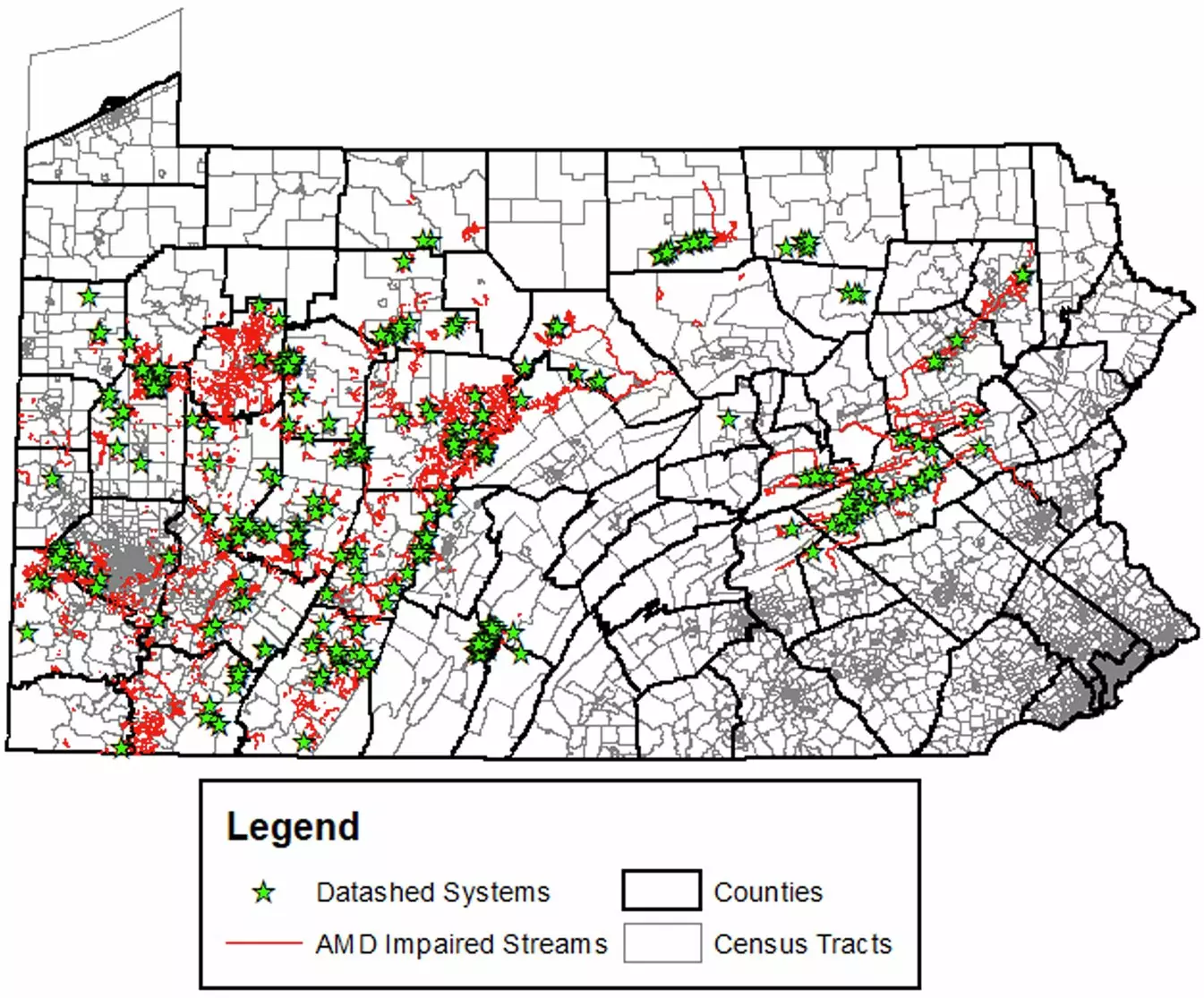The issue of abandoned mine drainage in Pennsylvania presents a formidable environmental and socio-economic challenge. Recently, research from the University of Pittsburgh has shed light on how state and federal appropriations have facilitated the treatment of this problematic water, which, if left untreated, leads to widespread ecological damage. This research underscores the urgent need for comprehensive funding strategies to ensure both effective remediation of acidic mine drainage and the long-term health of affected communities.
The legacy of coal mining has left Pennsylvania with extensive abandoned mine liabilities, leading to dire consequences for several communities. Approximately 2.4 million individuals reside in areas where mine drainage has impaired local water bodies. Alarmingly, these communities often experience lower household incomes—reportedly 30% less than their unaffected counterparts—and their economic prospects are further jeopardized by the ongoing energy transition away from coal.
The economic ramifications of mine drainage extend beyond mere income disparity; they engender a cycle of poverty that complicates recovery efforts. For instance, neighborhoods grappling with degraded water quality cannot attract investments that are critical for revitalization. The research articulates that the current treatment systems have managed to protect over 1,000 miles of waterways, but the stark reality is that 5,600 miles remain affected by various degrees of impairment.
Current Remediation Efforts: Successes and Limitations
The remediation strategies implemented over the past 35 years have indeed yielded positive outcomes, with over 300 treatment systems created using federal and state funds. The average cost-effectiveness of these systems is commendable, as they have reportedly protected streams at an annual cost of $5,700 per kilometer. However, despite these advancements, the treatment of abandoned mine drainage is only a fraction of what is necessary.
Attention must also be directed toward the myriad of other hazards associated with abandoned mines, such as sinkholes and unstable highwalls. These dangers exacerbate the problem of mine drainage, compounding the risks facing local populations. The research highlights the necessity of a holistic approach in addressing these myriad issues, suggesting that the ongoing funding cannot merely focus on drainage purification and must extend to restoration of the broader mining landscape.
In 2021, the Infrastructure and Investment and Jobs Act (IIJA) allocated $16 billion for cleaning up abandoned wells and mines, marking a pivotal moment for remediating environmental blight and supporting the ongoing transition to greener energy sources. While significant, the distribution of these funds remains ambiguous, raising questions regarding who truly benefits from this investment. Additionally, with Pennsylvania projected to receive one-third of the IIJA funding, a degree of urgency is required to ensure these resources translate into tangible benefits for the communities in most desperate need.
The research highlights a troubling trend: communities adversely affected by mine drainage are more economically vulnerable, which results in a disproportionate ability to leverage new funding for recovery and improvement. Therefore, prioritizing these areas not only addresses environmental injustice but also paves the way for sustainable economic development.
Looking Forward: The Financial Needs for Comprehensive Solutions
The research culminates in a clarion call for greater financial commitments to tackle the lingering issues associated with abandoned mines. The authors project that Pennsylvania will require an astounding $1.5 billion over the next 25 years just for the repair of existing drainage systems—this number soars to $3.9 billion when considering the broader liabilities, which encompass non-drainage hazards such as sinkholes and abandoned shafts.
While current funding strategies have demonstrated the potential for effective remediation, they highlight an essential truth: long-term and multifaceted approaches must be adopted to achieve lasting solutions for both environmental health and community prosperity.
As research underscores the multifaceted challenges of abandoned mines in Pennsylvania, it is evident that addressing the acid drainage problem will require not only financial investment but also collaborative efforts between government, communities, and environmental organizations. By fostering partnerships and maintaining a commitment to equity, we can pave the way for cleaner water and renewed hope for the vulnerable populations that have endured the consequences of mining for too long. The time for action is now—our approaches must be as comprehensive and resilient as the communities we strive to support.


Leave a Reply